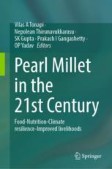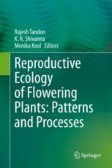Search
Search Results
-
Apomixis in Melastomataceae
Some angiosperms exhibit the ability to form seeds asexually through apomixis. This reproduction mode is more common in some families such as...
-
Engineering apomixis in crops
Apomixis is an asexual mode of reproduction through seeds where progeny are clones of the mother plants. Naturally apomictic modes of reproduction...

-
Mechanism and molecular basis of apomixis in angiosperms
Hybrids with high yield and stress tolerance have been developed by researchers and cultivated by farmers over the years. However, their genetic...

-
New facts about callose events in the young ovules of some sexual and apomictic species of the Asteraceae family
Callose (β-1,3-glucan) is one of the cell wall polymers that plays an important role in many biological processes in plants, including reproductive...

-
Apomixis: oh, what a tangled web we have!
Main conclusionApomixis is a complex evolutionary trait with many possible origins. Here we discuss various clues and causes, ultimately proposing a...

-
Interploidy gene flow via a ‘pentaploid bridge’ and ploidy reduction in Cystopteris fragilis fern complex (Cystopteridaceae: Polypodiales)
Key messageOur results indicate the existence of interploidy gene flow in Cystopteris fragilis , resulting in sexual triploid and diploid...

-
A novel strategy to study apomixis, automixis, and autogamy in plants
Key messageThe combination of a flow cytometric seed screen and genoty** of each single seed offers a cost-effective approach to detecting complex...

-
Apomixis: A Foresight from Genetic Mechanisms to Molecular Perspectives
Apomixis is considered to be a natural mode of clonal propogation from seed to seed, in which progeny serves as a replica of maternal genotype. The...

-
Determining Germ Cells in Flowering Plants: Common Concepts and Molecular Mechanisms Steering Meiocyte Specification and Mode of Cell Division
The specification of meiocyte, a specialized cell type capable of entering meiosis, is a hallmark of the initiation of the reproductive process in...

-
Asexual propagation could be an escape to sustain the constraints of inefficient gametic system in the evolving endemic species: evidence from meiotic anomalies encountered in Aponogeton bruggenii (Aponogetonaceae)
The present study deals with the cytogenetics of Aponogeton bruggenii S.R.Yadav and Govekar (Aponogetonaceae) sporting asexual propagation. Mitotic...

-
An exonuclease V homologue is expressed predominantly during early megasporogenesis in apomictic Brachiaria brizantha
Main conclusionAn exonuclease V homologue from apomictic Brachiaria brizantha is expressed and localized in nucellar cells at key moments when these...

-
Antagonistic Action of Yucasine and DMSO on Apogamy in the Fern Dryopteris affinis ssp. affinis
Apogamy is a peculiar case of apomixis, very frequent in ferns, in which an asexual embryo evolves from somatic cells of the gametophyte generation....
-
Polyembryony: A Potential Horticultural Trait, Reveals Complex Mechanism, Role of Molecular Markers and their Application in Fruit Crops
Rootstocks/scions with potential for commercial growing, either for the industry or fresh market, have been one of the main objectives of the fruit...

-
Establishment of a correlation between pistil size and female gametophyte developmental stages in apomictic and sexual lines of Cenchrus americanus (L.) Morrone
Apomixis is a unique reproductive strategy that leads to seed production without reductional division and gametic fusion. In order to unravel the...

-
Milestones in Biology, Genetics, and Breeding of Pearl Millet
Pearl millet is a fascinating species for conducting basic research in biology and genetics; and for applied research in breeding. With a small...
-
Small RNA sequencing provides candidate miRNA-target pairs for revealing the mechanism of apomixis in Zanthoxylum bungeanum
BackgroundApomixis is a form of asexual reproduction that produces offspring without the need for combining male and female gametes, and the...

-
Winter flowers for bees: reproductive biology of Trixis praestans (Asteraceae)
The shrub Trixis praestans (Asteraceae) is widely distributed in Argentina, Brazil, Uruguay and Paraguay. It has great potential as a melliferous...

-
Role of Apomixis in Perpetuation of Flowering Plants: Ecological Perspective
Apomixis or asexual formation of seeds involves three major features, absence of meiotic reduction, recombination and fertilisation, and thereby...
-
A Review of Breeding Systems in the Pineapple Family (Bromeliaceae, Poales)
Breeding systems play an essential role in plant sexual reproduction and influence speciation and extinction processes. However, our understanding of...

-
Regeneration characteristics of Garcinia pedunculata: utilization of adventitious embryony for mass multiplication
The fruit of Garcinia pedunculata is one of the costliest indigenous fruits sold in local markets of Manipur for cuisine and various other utilities....

